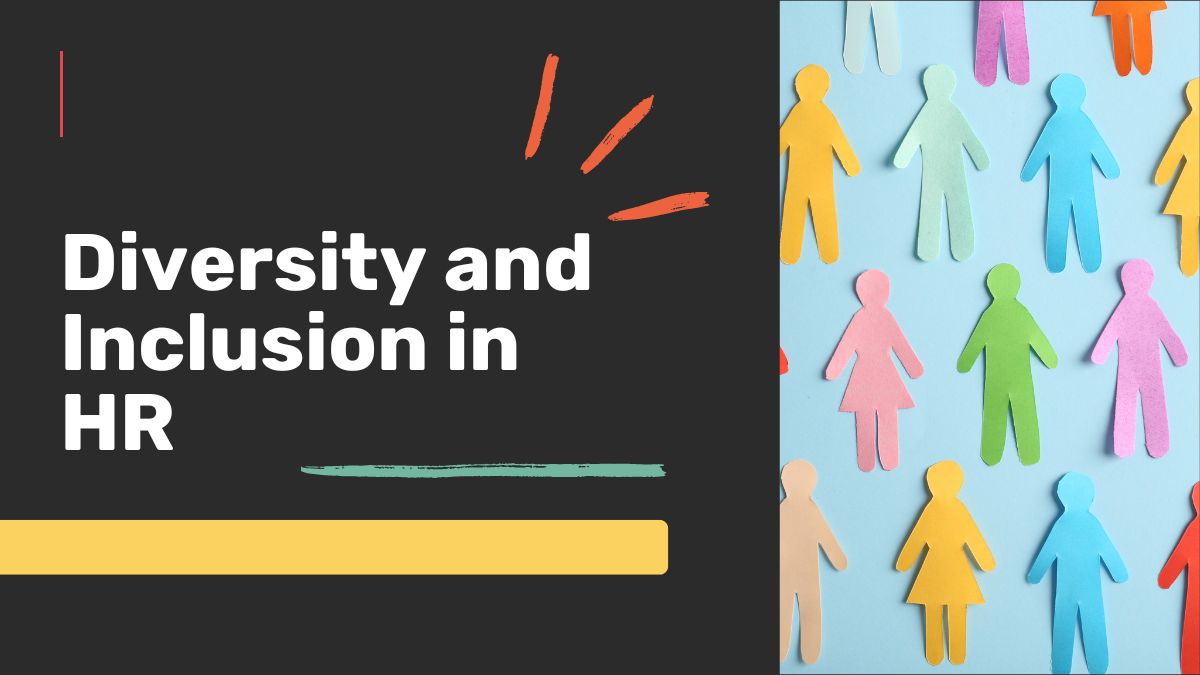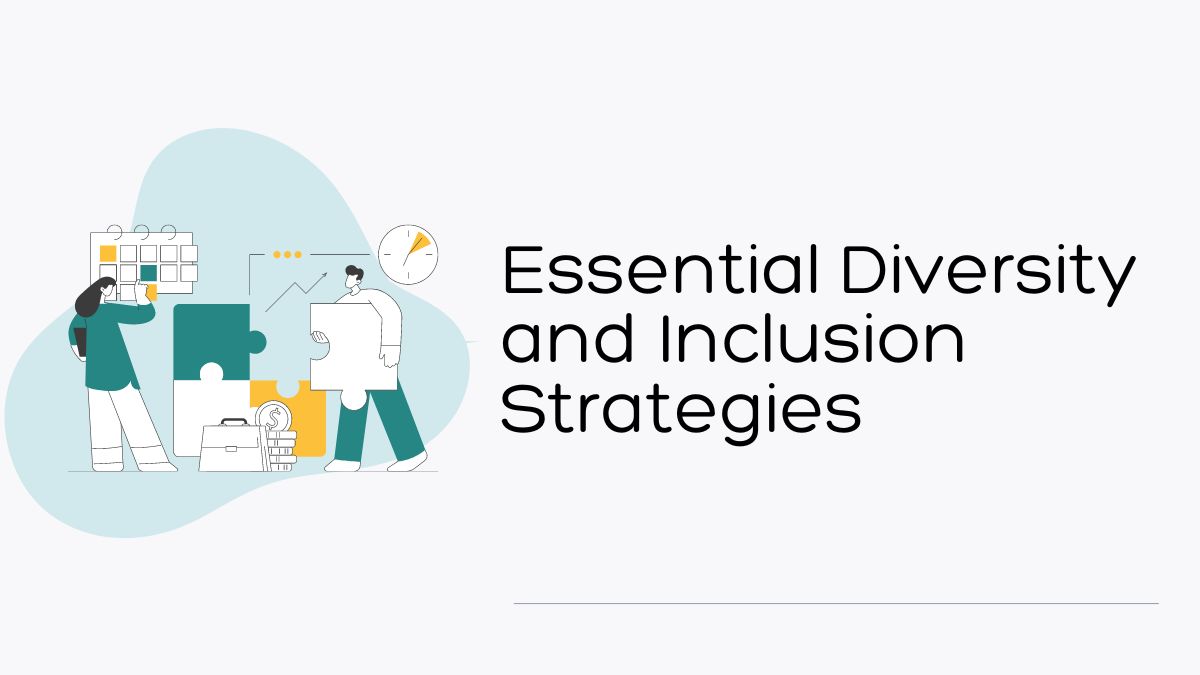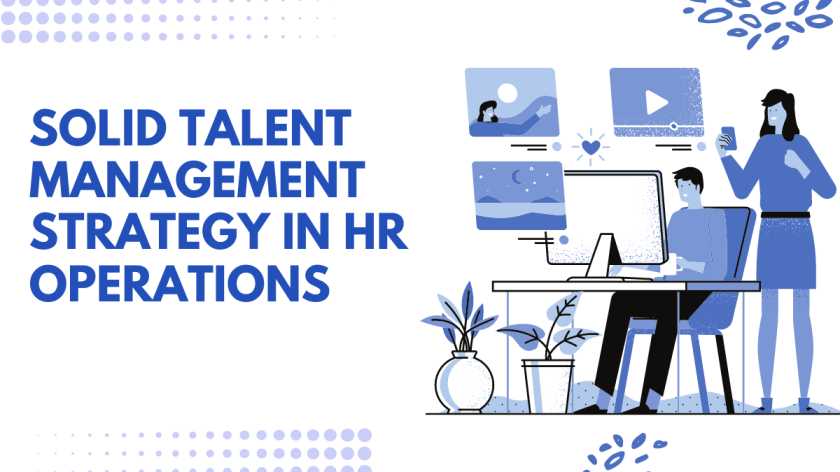Talent management in HR is a strategic process that organisations use to attract, develop, retain and optimise the performance of their employees. It’s about ensuring that the right people are in the right roles at the right time to achieve organisational goals.
Let us learn about the importance of an effective talent management strategy when it comes to successful HR operations.
Why is Talent Management Important for HR Operations?
Talent management is crucial for HR operations because:
- Competitive Advantage: A strong talent management strategy can differentiate an organisation from its competitors by attracting and retaining top talent.
- Organisational Success: Effective talent management leads to higher employee engagement, productivity and overall organisational performance.
- Succession Planning: By identifying and developing high-potential employees, organisations can create a pipeline of talent to fill critical roles.
- Cost-Effectiveness: Investing in talent management can help reduce turnover costs and improve employee satisfaction, leading to a more positive work environment.
Components of Talent Management in HR
A comprehensive talent management strategy encompasses various interrelated components that work together to optimise human capital. These components are crucial for attracting, developing, retaining and optimising the performance of employees.
Talent Acquisition
Talent acquisition is the process of attracting, identifying and hiring qualified individuals who align with the organisation’s goals and culture. It involves developing a strong employer brand, effective recruitment strategies and a robust candidate experience.
Onboarding
Onboarding is the process of welcoming new employees and integrating them into the organisation’s culture and team dynamics. It involves providing necessary training, information and support to ensure that new hires are successful in their roles.
Performance Management
Performance management is a systematic process for setting expectations, providing feedback and evaluating employee performance. It involves establishing clear performance objectives, conducting regular performance reviews and providing opportunities for professional development.
Learning and Development
Learning and development are essential for employees to acquire new skills, knowledge and competencies. It involves identifying training needs, providing relevant development opportunities and measuring the effectiveness of training programs.
Career Development
Career development is the process of helping employees identify and achieve their career goals. It involves providing career counselling, mentoring and opportunities for advancement within the organisation.
Compensation and Benefits
Competitive compensation and benefits packages are essential for attracting and retaining top talent. It involves conducting salary surveys, offering competitive compensation and providing comprehensive benefits packages.
Employee Engagement
Employee engagement is the emotional commitment and involvement of employees in their work and the organisation. It involves creating a positive work environment, fostering a sense of belonging and providing opportunities for employees to contribute to the organisation’s success.
Succession Planning
Succession planning is the process of identifying and developing high-potential employees to fill critical roles within the organisation. It involves creating a talent pipeline, providing leadership development opportunities and ensuring a smooth transition of leadership.
Talent Analytics
Talent analytics is the use of data and analytics to measure and improve talent management practices. It involves collecting and analysing data on recruitment, performance, retention and other key talent metrics.
Employee Experience
Employee experience is the overall perception and feeling of employees about their work environment and their relationship with the organisation. It involves creating a positive and supportive work culture, providing opportunities for growth and development and ensuring that employees feel valued and appreciated.
Talent Acquisition and Onboarding
Effective talent acquisition and onboarding are critical components of a successful talent management strategy. They play a vital role in attracting, hiring and retaining top talent, ensuring that new employees are well-prepared to contribute to the organisation’s success.
The Importance of Effective Talent Acquisition
Effective talent acquisition is essential for organisations to compete for top talent and achieve their strategic objectives. It involves developing a strong employer brand, attracting qualified candidates and selecting the best individuals for the organisation. A well-executed talent acquisition process can lead to improved employee performance, reduced turnover and increased organisational productivity.
Best Practices for Attracting and Hiring Top Talent
To attract and hire top talent, organisations should implement the following best practices:
- Develop a strong employer brand: Create a positive and compelling employer brand that highlights the organisation’s values, culture and career opportunities.
- Utilise effective recruitment channels: Leverage a variety of recruitment channels, including job boards, social media, employee referrals and recruiting agencies, to reach a diverse pool of qualified candidates.
- Conduct thorough candidate assessments: Use a combination of assessments, interviews and references to evaluate candidates’ qualifications, skills and cultural fit.
- Offer a competitive compensation and benefits package: Provide a competitive compensation and benefits package to attract and retain top talent.
- Create a positive candidate experience: Ensure that candidates have a positive experience throughout the recruitment process, from initial application to job offer.
The Role of Onboarding in Employee Success
Onboarding is the process of welcoming new employees and integrating them into the organisation’s culture and team dynamics. It plays a crucial role in employee success by providing new hires with the necessary information, training and support to perform their jobs effectively. A well-designed onboarding program can help new employees feel valued, engaged and confident in their roles.
How to Create a Positive and Engaging Onboarding Experience
To create a positive and engaging onboarding experience, organisations should:
- Develop a comprehensive onboarding plan: Create a detailed onboarding plan that outlines the key activities, timelines and responsibilities involved in the process.
- Assign a dedicated onboarding buddy: Assign a mentor or buddy to guide new employees and answer their questions.
- Provide necessary training and orientation: Offer training and orientation sessions to help new employees understand the organisation’s culture, policies and procedures.
- Facilitate social integration: Organise team-building activities and social events to help new employees connect with their colleagues.
- Provide ongoing support and feedback: Offer ongoing support and feedback to new employees as they transition into their roles.
Employee Development and Training
Employee development and training are essential for organisations to invest in their workforce planning and ensure that employees have the skills, knowledge and competencies to succeed in their roles and contribute to the organisation’s goals. By providing ongoing development opportunities, organisations can enhance employee performance, boost morale and foster a culture of continuous learning.
The Benefits of Ongoing Employee Development
Ongoing employee development offers numerous benefits for both individuals and organisations, including:
- Improved employee performance: By acquiring new skills and knowledge, employees can enhance their job performance and contribute more effectively to the organisation’s success.
- Increased employee engagement: When employees feel invested in their professional growth, they are more likely to be engaged and motivated in their work.
- Enhanced employee satisfaction: Opportunities for development can lead to increased job satisfaction and a sense of fulfilment.
- Improved retention: By investing in employee development, organisations can create a positive work environment and reduce turnover.
- Enhanced organisational competitiveness: Skilled and knowledgeable workforce planning can give organisations a competitive advantage in the marketplace.
Identifying Training Needs and Opportunities
To ensure that training programs are effective and relevant, organisations must identify the specific training needs and opportunities of their employees. This can be done through performance reviews, employee surveys and analysis of organisational goals and objectives.
Creating and Delivering Effective Training Programs
Once training needs have been identified, organisations can develop and deliver effective training programs that meet the specific requirements of their employees. Effective training programs should be:
- Needs-based: Aligned with the specific training needs of employees.
- Relevant: Applicable to the employee’s job role and responsibilities.
- Engaging: Interactive and stimulating, to keep employees engaged and motivated.
- Measurable: With clear objectives and outcomes that can be evaluated.
- Facilitated by qualified trainers: Delivered by experienced and knowledgeable trainers.
Measuring the Impact of Training Programs
To evaluate the effectiveness of training programs, organisations should measure their impact on employee performance, job satisfaction and organisational outcomes. This can be done through pre- and post-training assessments, employee surveys and analysis of key performance indicators. By measuring the impact of training programs, organisations can identify areas for improvement and ensure that their investments in employee development are yielding positive results.
Performance Management and Feedback
Performance management is a systematic process for setting expectations, providing feedback and evaluating employee performance. It plays a crucial role in driving employee engagement, improving productivity and aligning individual goals with organisational objectives.
The Importance of Regular Performance Reviews
Regular performance reviews are essential for providing employees with feedback on their performance, identifying areas for improvement and recognising their achievements. They also help to ensure that employees are aligned with the organisation’s goals and objectives.
Setting Clear Performance Expectations
Clear performance expectations are essential for effective performance management. By setting specific, measurable, achievable, relevant and time-bound (SMART) goals, organisations can provide employees with a clear understanding of what is expected of them.
Providing Constructive Feedback and Coaching
Constructive feedback is essential for helping employees improve their performance. It should be specific, timely and delivered in a supportive and respectful manner. Coaching can also be a valuable tool for helping employees develop new skills and overcome challenges.
Using Performance Data to Improve HR Practices
Performance data can be used to identify trends, identify areas for improvement and inform HR practices. By analysing performance data, organisations can identify training needs, adjust compensation strategies and improve recruitment and selection processes.
Performance Management Best Practices
To ensure that performance management is effective, organisations should:
- Establish a clear performance management process: Develop a clear and consistent process for setting expectations, providing feedback and evaluating performance.
- Involve employees in goal-setting: Encourage employees to participate in setting their own goals and objectives.
- Provide ongoing feedback: Offer regular feedback throughout the year, rather than waiting for formal performance reviews.
- Use performance data to inform decision-making: Analyse performance data to identify trends, identify areas for improvement and inform HR practices.
- Create a culture of continuous improvement: Foster a culture where employees are encouraged to learn, grow and improve their performance.
Employee Engagement and Retention
Employee engagement and retention are critical components of a successful talent management strategy. Engaged employees are more likely to be productive, satisfied and committed to their organisations, leading to improved business outcomes.
The Link Between Employee Engagement and Business Success
Studies have shown strong correlations between employee engagement and business success. Engaged employees are more likely to:
- Be productive: They are more motivated, focused and committed to their work.
- Provide high-quality work: They take pride in their work and strive for excellence.
- Be loyal: They are less likely to leave the organisation.
- Improve customer satisfaction: They are more likely to provide exceptional customer service.
Strategies for Boosting Employee Engagement
Organisations can boost employee engagement by:
- Creating a positive work culture: Foster a positive and supportive work environment where employees feel valued and appreciated.
- Providing opportunities for growth and development: Offer employees opportunities to learn, grow and advance their careers.
- Recognising and rewarding employees: Acknowledge and reward employees for their contributions and achievements.
- Encouraging employee involvement: Involve employees in decision-making and problem-solving processes.
- Offering flexible work arrangements: Provide employees with flexible work options, such as remote work or flexible hours.
The Importance of Employee Retention
Employee retention is essential for organisations to maintain a stable workforce and avoid the costs associated with high turnover. Retaining top talent can lead to improved productivity, reduced training costs and enhanced organisational knowledge.
Creating a Positive and Supportive Work Environment
A positive and supportive work environment is essential for employee engagement and retention. Organisations can create such an environment by:
- Promoting work-life balance: Encourage employees to maintain a healthy work-life balance.
- Providing opportunities for social interaction: Organise team-building activities and social events.
- Addressing employee concerns and complaints: Actively listen to employees’ concerns and address them promptly.
- Promoting diversity and inclusion: Create a diverse and inclusive workplace where everyone feels valued and respected.
- Providing competitive compensation and benefits: Offer competitive compensation and benefits packages to attract and retain top talent.
By investing in employee engagement and retention, organisations can create a positive and productive work environment, improve employee satisfaction and drive business success.
Succession Planning and Leadership Development
Succession planning and leadership development are essential for organisations to ensure a smooth transition of leadership and maintain continuity of operations. By identifying and developing high-potential employees, organisations can create a pipeline of talent to fill critical roles and sustain their success.
The Benefits of Succession Planning
Succession planning offers numerous benefits for organisations, including:
- Reduced risk: By having a plan in place to fill critical roles, organisations can reduce the risk of disruptions and disruptions.
- Improved organisational performance: A strong leadership pipeline can lead to improved organisational performance and innovation.
- Enhanced employee morale: Succession planning can boost employee morale by providing opportunities for advancement and development.
- Increased organisational stability: A well-executed succession plan can help to ensure organisational stability and continuity.
Identifying Potential Successors and Developing Their Skills
To identify potential successors, organisations should assess employees’ skills, experience, potential and alignment with the organisation’s values and culture. Once identified, these individuals should be provided with opportunities for development to prepare them for leadership roles.
Creating a Leadership Development Pipeline
A leadership development pipeline is a systematic process for identifying, developing and preparing high-potential employees for leadership roles. It involves providing opportunities for training, mentoring, coaching and experiential learning.
Ensuring a Smooth Transition of Leadership
A smooth transition of leadership is essential for maintaining organisational stability and continuity. To ensure a smooth transition, organisations should:
- Communicate the succession plan: Clearly communicate the succession plan to employees, stakeholders and the board of directors.
- Provide adequate handover time: Allow sufficient time for the incoming leader to familiarise themselves with their new role and responsibilities.
- Provide support and guidance: Offer support and guidance to the incoming leader during the transition period.
- Celebrate the outgoing leader: Recognise and celebrate the contributions of the outgoing leader.
Measuring the Effectiveness of Your Talent Management Strategy
Measuring the effectiveness of your talent management strategy is crucial for ensuring that your efforts are yielding the desired results. By tracking key metrics and analysing data, you can identify areas for improvement and refine your strategy to optimise your organisation’s talent management practices.
Key Metrics for Measuring Talent Management Success
To measure the effectiveness of your talent management strategy, consider tracking the following key metrics:
- Recruitment metrics: Time to fill, cost per hire, quality of hire, applicant tracking system (ATS) usage.
- Retention metrics: Employee turnover rate, tenure, employee satisfaction surveys, net promoter score (NPS).
- Performance metrics: Employee performance ratings, employee engagement surveys, absenteeism rates and productivity levels.
- Development metrics: Training completion rates, employee development program participation, promotion rates, succession planning effectiveness.
- Cost metrics: Cost per employee, total compensation expenses, training costs, turnover costs.
Analysing Data to Identify Areas for Improvement
By analysing data from these metrics, you can identify areas where your talent management strategy is falling short and areas where it is excelling. Look for trends, patterns and correlations that can provide insights into the effectiveness of your initiatives.
Using Insights to Refine Your Talent Management Strategy
Once you have identified areas for improvement, you can use the insights gained from your data analysis to refine your talent management strategy. This may involve:
- Adjusting recruitment strategies: If you are experiencing difficulty attracting top talent, consider adjusting your recruitment channels or employer branding efforts.
- Improving onboarding and training programs: If new employees are struggling to adapt to their roles, evaluate your onboarding and training programs to identify areas for improvement.
- Enhancing employee engagement initiatives: If employee engagement is low, implement initiatives to improve the employee experience and foster a positive work culture.
- Optimising compensation and benefits packages: If employee turnover is high, review your compensation and benefits packages to ensure they are competitive.
- Strengthening succession planning efforts: If you are struggling to fill critical roles, invest in succession planning to develop a pipeline of high-potential employees.
Wrapping Up
Effective talent management in HR is essential for organisations to achieve their strategic objectives and remain competitive in today’s dynamic business environment. By implementing a comprehensive talent management strategy, organisations can attract, develop, retain and optimise the performance of their employees, leading to improved productivity, employee satisfaction and overall business success.
If you wish to become a chief HR officer, the Global Senior Leadership Programme Specialisation: Chief Human Resource Officer can help you make your dreams come true. This IIM Lucknow Chief Human Resource Officer programme will teach you everything you need to become a senior HR leader.
Frequently Asked Questions
What is the difference between talent management and human resources?
While human resources encompasses all aspects of managing employees, talent management focuses specifically on attracting, developing, retaining and optimising the performance of high-potential employees.
How can I measure the effectiveness of my talent management strategy?
You can measure the effectiveness of your talent management strategy by tracking key metrics such as employee turnover rates, employee satisfaction and organisational performance.
What are some common challenges in talent management?
Common challenges in talent management include attracting top talent, retaining high-performing employees, developing leadership talent and aligning talent strategies with business objectives.
How can technology be used to support talent management?
Technology can be used to streamline talent management processes, such as applicant tracking, performance management and employee development. Additionally, data analytics can provide valuable insights into talent trends and identify areas for improvement.






